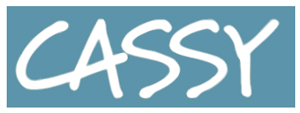How Your Brain Helps You Form New Habits (and Break Bad Ones)
New Year’s resolutions. Easy to make. Hard to keep.
But if you’re trying to set goals or make changes in the new year, there’s good news: your brain is actually on your side.
“The brain is very plastic, that is to say very changeable,” Susan Hillier, a professor of neuroscience and rehabilitation at the University of South Australia, told The Washington Post.
Understanding how the brain works is key is allowing your brain to work with you to achieve your goals.
How to form new habits
How do you establish a new habit? Hillier looks to water for an analogy. In a new, shallow river bed, water “can flow somewhat unpredictably in multiple channels,” she says. Deepening that channel — developing a pattern of neural firing in the brain — takes repetition and practice. Your goal is to create new neural pathways. “The more you practice and refine, the more the pattern will become subconscious and become your new default,” said Hillier.
Your brain works like a starter gun at a track meet
To understand how habits form, you need to look deep inside the brain. There, a region known as the basal ganglia – specifically an area called the putamen – plays a key role in turning practice into new habits.
The putamen is “like a learning machine,” explained Kyle Smith, a professor of psychological and brain sciences at Dartmouth College. Each time you begin to practice something new, neurons fire in the putamen “like the start signal at a track meet — propelling the behavior forward so that it can become a habit.”
The more you practice an activity, the more it becomes a habit. Try these evidence-based strategies to form new habits and make them stick.
1. Choose your goals wisely
Humans tend to do things they want to do.
So when setting goals, keep that fact in mind, trying to make them intrinsically motivating, said Juan Pablo Bermúdez, a professor at Externado University of Colombia in Bogotá and research associate at Imperial College London who studies self-control and willpower. “There is solid evidence that we are better at sticking to activities that we want to do than to activities that we have to do,” he said.
Further, make some of your goals easy to achieve to boost your motivation. Bars set impossibly high are simply dispiriting. “When you have a goal and you fail, it’s very disheartening,” said Bermúdez. That can have a kind of domino effect on all of your other motivations.” Throw some easy wins into the mix. That’s not cheating; that’s wisdom.
2. Make your goals specific
Research shows that short-range specific goals improve attention and focus. In one study where participants pressed a button to gauge their reaction time, once they were given a specific goal – like responding under 400 milliseconds – their scores improved.
Matthew Robison, a psychology professor at the University of Texas at Arlington who conducted the study with his colleagues, recommends making goals concrete and short-term, rather than sweeping long-range changes. Think about small choices you can make “day-to-day or even moment-to-moment” which “can really keep your attention squarely focused on what it is that you’re trying to accomplish.” For example, rather than deciding to eat healthier this year, cross donuts off the grocery list and purchase oatmeal and fresh fruit.
Bermúdez suggests spelling out not only what you’re going to do but as many details as possible: where, when, and with whom will you make this change.
3. Choose your environment wisely and use context clues in forming new habits
“In terms of forming new habits in the new year, repetition is key, but also being aware that the context makes a great deal of difference in terms of how the brain latches on to things,” said Smith.
Bermúdez, who studies willpower, notes how important it is to identify when your environment sets up a conflict with your goal. If you want to drink less alcohol, going to a bar will impact that motivation. Choose environments that align with what you are trying to do.
Visual reminders are also helpful, Smith noted – like setting out your gym bag and shoes – as a signal that it’s time to do something.
4. Reward yourself
Our brains are wired for rewards, so don’t shy away from them when trying new things. “Guilt is not a sustainable motivator,” said Hillier. “Move toward a positive reward.”
Even small treats can help new habits stick, like going out to coffee after you go for a run. “The brain loves these hits of reward to say ‘do that again,’” said Smith.
Feedback is another form of reward that improves performance. It can be as simple as physically crossing goals off a to-do list. “That’s a visual, tactile sensation of ‘I did that.’ And that is rewarding, right?” Robison said.
Bermúdez carries his scribbled New Year’s resolutions in his wallet all year long. From time to time, he pulls it out to see how he’s doing, which “actually helps me reassess and get back on track if I need to or congratulate myself if I’ve done well,” he said.
5. Use all the tools available to you
Some people find it easier to be accountable by sharing their goals with others or on social media.
Reframing the benefits of a goal is another useful tool. If you want to exercise but don’t relish the prospect, think of it as an opportunity to get outside or listen to a favorite podcast.
If you want to break a bad habit, “focus on the negatives of the tempting action,” saidBermúdez, because it will start to look less and less appealing.
6. Show yourself compassion
If you find yourself failing over and over at an unreachable goal, Bermúdez recommends revising it. Revising your goals does not make you a failure. “Sometimes it’s the brave thing to do when you face the problem and you take a different path,” he encouraged.
Read the full article here.
Jones, Sam. “How to help your brain form healthy habits and break the bad ones.” The Washington Post, 21 Dec 2023, https://www.washingtonpost.com/wellness/2023/12/21/habit-formation-practice-tips-brain/.
Photo by Jason Hogan on Unsplash



